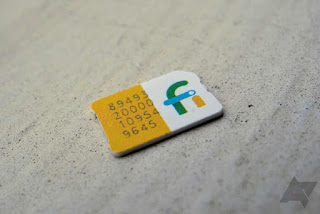Is your Wi-Fi
slower than usual? Having trouble connecting? It's possible that someone is
mooching your Wi-Fi.
Whether it's the unknown guy in the
upstairs apartment or bad code running on a shady device, the misuse must stop.
This article will help you do just that.
*See
what's connected to your network
Many of today's network routers
feature companion mobile
apps. These applications let you both monitor and control your network
right from your phone. Check your router's user manual to see if there's an app
for it. Products from many big players offer home network hardware that come
with this ability, including Google, Netgear and
Asus.
Within the app, look for a menu
called "connected devices" or something similar . You should see a
list of devices currently connected to your home Wi-Fi. Look through the list
and take stock of what's in your home that connects to the internet.
If you see an active device that's
clearly not one you own, like a Windows PC when your family has only Macs, or
perhaps an unknown iPad ($345 at Amazon Marketplace), that's a tell-tale sign that
someone else is stealing your Wi-Fi.
If your router is a few years old,
it may not offer an app.
Even so, you should be able to access a list of
connected devices though your router's web
portal. Check your manual for access instructions.
*Look for unknown devices
Within the list of devices connected to your network, sometimes there are items with mysterious labels like, "Unknown Device." To identify these mysterious devices, start by looking for their MAC and IP addresses in your router's app or web portal. Then find that info on your connected devices. Some Wi-Fi products actually have their MAC address printed on them physically, but you can also find them in the device's settings.Once you think you've tracked down the gadget in question, unplug or disconnect it if you can. If it disappears from your list of connected devices, then that's your answer.
If the mystery item is currently idle -- i.e. not actively consuming metered data -- and remains that way every time you check it, try disabling it. The app for the Google Wi-Fi router displays this information.
Some other routers from Buffalo and Asus also provide these details. If not, you might want to consider third-party network monitoring software. Pay close attention to any unknown items that remain, even after you've powered down every conceivable device. Be especially wary of unknown items like this that are actively using network data. These could be unauthorized users or software. Disable them promptly just to be safe.
*Stay up to date
Stagnant network software is a hack waiting to happen. Check for firmware and software updates regularly, and apply them when available.This doesn't just mean your router, but anything connected to home Wi-Fi. Laptops, phones, tablets, light switches, speakers, refrigerators, all are fair game.
*Ensure your Wi-Fi network is secure
If you aren't already using a password to access your home's Wi-Fi, stop now and set up password protection. By leaving your network open, anyone can use it and even steal your passwords. Already using a password? If you find suspicious devices on your network, it's time to change it -- especially if you haven't done so since you got your router.It's always prudent to use the toughest security protocols available. For Wi-Fi, that also happens to be the most recently implemented, WPA2. Select that option if you can within your router settings.














No comments:
Post a Comment